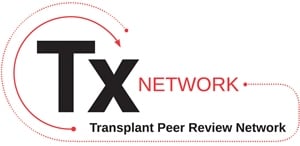Journal list menu
Export Citations
Download PDFs
COVER IMAGE
American Journal of Transplantation: Volume 18, Number 10, October 2018
- First Published: 27 September 2018
On the cover this month: The advent of direct-acting antiviral agents with efficacy for HCV provides numerous new options for the treatment of HCV in recipients, regardless of organ. These treatment strategies are changing the calculus for clinicians who must weigh the odds of HCV disease progression (or acquisition) versus the utility of reducing wait time by accepting an HCV-positive organ. This month, AJT covers this topic in depth, presenting numerous original articles, editorials, and reviews evaluating the impact of pre–, peri–, and post–transplant use of direct-acting HCV-specific antiviral therapies. Cover design by Megan Llewellyn, Duke University Department of Surgery.
THE AJT REPORT
Hepatitis C Infection May Be a Blessing for Patients in Need of a Transplant
- Pages: 2373-2374
- First Published: 27 September 2018
This month's installment of “The AJT Report” looks at how transplanting HCV-positive organs can reduce risks for patients awaiting organs. We also report on Bristol Myers Squibb's recent easement of restrictions in prescribing belatacept (Nulojix).
LITERATURE WATCH
Danger, Metabolism and T Cell Memory
- Page: 2375
- First Published: 27 September 2018
Extracellular ATP promotes durable CD8+ T cell memory by signaling through the purinergic receptor P2RX7.
EDITORIALS
Where have all the (HCV-positive) kidneys gone?
- Pages: 2377-2379
- First Published: 27 July 2018
Sawinski reviews two Markov decision analyses for timing of HCV therapy and expanded use of HCV-positive kidneys, as well as the real-world transplant consequences of HCV treatment in transplant candidates. See the companion articles on pages 2443, 2457, and 2559.
Maximizing utilization of the donor pool by appropriate classification of hepatitis C antibody–positive donors
- Pages: 2380-2381
- First Published: 20 August 2018
In this editorial, the authors highlight recent work from de Vera et al (page 2451) regarding the transplantation of kidneys from HCV antibody–positive donors to HCV-negative recipients that should increase provider confidence in the safety of using these organs.
If hepatitis C therapy is so great, why isn't everyone doing it?
- Pages: 2382-2383
- First Published: 04 June 2018
HCV therapy is highly effective but underutilized in the transplant setting, likely due to a combination of insurance barriers and lack of adherence to treatment guidelines by transplant professionals. See the article from Axelrod et al on page 2473.
COMPREHENSIVE REVIEW
Ex situ machine perfusion as a tool to recondition steatotic donor livers: Troublesome features of fatty livers and the role of defatting therapies. A systematic review.
- Pages: 2384-2399
- First Published: 27 June 2018
This review describes the problems associated with the transplantation of steatotic donor livers and discusses pharmacological and nonpharmacological options that are being developed to enhance metabolic recovery using ex situ machine perfusion and defatting strategies.
MINIREVIEW
The future of marginal kidney repair in the context of normothermic machine perfusion
- Pages: 2400-2408
- First Published: 07 June 2018
Normothermic machine perfusion of kidneys, an upcoming method for reconditioning and repair, has the potential to serve as a platform for pretransplant allograft modulation in which various therapies can be introduced to alleviate ischemia-reperfusion injury.
PERSONAL VIEWPOINT
The road map toward an hepatitis C virus-free transplant population
- Pages: 2409-2416
- First Published: 23 June 2018
This article considers the optimal use of direct-acting antiviral agents for patients with HCV pre–, peri–, and post–liver transplant and provides expert opinion on current controversies and clinical issues that remain to be addressed.
ORIGINAL ARTICLES
Basic Science
Donor pretreatment with nebulized complement C3a receptor antagonist mitigates brain-death induced immunological injury post–lung transplant
- Pages: 2417-2428
- First Published: 05 March 2018
In a murine model, nebulized treatment of the brain dead donor lung with a complement C3a receptor antagonist significantly reduces ischemia-reperfusion injury, and further reduces the tempo of acute rejection.
Single nucleotide variant counts computed from RNA sequencing and cellular traffic into human kidney allografts
- Pages: 2429-2442
- First Published: 16 April 2018
The ratio of heterozygous to nonreference genome homozygous single nucleotide variants computed from human kidney allograft RNA-sequencing data offers an unbiased and quantitative parameter for characterizing cellular traffic into the kidney allografts.
Clinical Science
Hepatitis C virus–infected kidney waitlist patients: Treat now or treat later?
- Pages: 2443-2450
- First Published: 24 April 2018
The decision to delay HCV treatment in waitlisted patients so they may receive a kidney quicker may not be in their best interest compared to prompt treatment, if the supply of infected organs is low or the associated mortality risk of nontreatment is high. Sawinski's editorial is on page 2377, and companion articles are on pages 2457 and 2559.
Transplantation of hepatitis C virus (HCV) antibody positive, nucleic acid test negative donor kidneys to HCV negative patients frequently results in seroconversion but not HCV viremia
- Pages: 2451-2456
- First Published: 24 July 2018
This single-center study demonstrates the absence of HCV transmission when transplanting kidneys from HCV antibody positive/nucleic acid testing negative donors. See Goldberg and Wolfe's editorial on page 2380.
Cost-effectiveness of using kidneys from hepatitis C nucleic acid test–positive donors for transplantation in hepatitis C–negative recipients
- Pages: 2457-2464
- First Published: 23 May 2018
In this cost-effectiveness analysis, the use of HCV-positive deceased donor kidneys for transplantation in HCV-negative recipients followed by treatment with direct-acting antiviral drugs was cost-effective compared to dialysis for 1 year while waiting for transplantation from a HCV-negative donor, and cost-saving compared to waiting for 2 or more years. See Sawinski's analysis on page 2377, and companion articles on pages 2443 and 2559.
Are we underestimating the quality of aviremic hepatitis C–positive kidneys? Time to reconsider
- Pages: 2465-2472
- First Published: 16 February 2018
A retrospective matched case-control analysis of adult deceased donor kidney transplants demonstrates that if the HCV status of the aviremic kidneys were assumed to be negative, 122 more kidneys could have been allocated to patients with an estimated posttransplant survival score <20.
The impact of direct-acting antiviral agents on liver and kidney transplant costs and outcomes
- Pages: 2473-2482
- First Published: 27 April 2018
Examination of integrated US transplant registry data and records from a nationwide pharmacy claims warehouse demonstrates patterns of improved patient and graft survival in HCV-positive liver and kidney transplant recipients treated after introduction of direct-acting antiviral medications, but relatively limited access to these expensive medications among patients most likely to benefit. Brown offers comments in his editorial on page 2382.
Population level outcomes and cost-effectiveness of hepatitis C treatment pre- vs postkidney transplantation
- Pages: 2483-2495
- First Published: 30 July 2018
This study finds that optimal timing for HCV treatment is modified by liver fibrosis stage and local wait times, with posttransplant treatment favored for patients with minimal fibrosis and pretransplant treatment favored for those with advanced disease.
Cost-effectiveness of hepatitis C–positive donor kidney transplantation for hepatitis C–negative recipients with concomitant direct-acting antiviral therapy
- Pages: 2496-2505
- First Published: 03 August 2018
This cost-effectiveness analysis using data derived from US Medicare costs and national US waitlist and posttransplant mortality rates suggests that a strategy utilizing HCV nucleic acid test (NAT)-positive donor kidneys for HCV NAT-negative recipients followed by HCV treatment is significantly less costly and slightly more effective compared to waiting for HCV NAT-negative donor kidneys.
Immune-mediated graft dysfunction in liver transplant recipients with hepatitis C virus treated with direct-acting antiviral therapy
- Pages: 2506-2512
- First Published: 03 August 2018
In this multicenter cohort, immune-mediated graft injury related to direct-acting anti-HCV therapy after liver transplantation was uncommon but associated with higher morbidity than those without this complication, and could be predicted by persistent liver test abnormalities during and soon after therapy completion.
Direct-acting antivirals are effective and safe in HCV/HIV-coinfected liver transplant recipients who experience recurrence of hepatitis C: A prospective nationwide cohort study
- Pages: 2513-2522
- First Published: 02 July 2018
Direct-acting antivirals against HCV offer a very high and similar efficacy and safety in HIV-positive and HIV-negative liver transplant recipients.
Dietary Approach to Stop Hypertension (DASH) diet and risk of renal function decline and all-cause mortality in renal transplant recipients
- Pages: 2523-2533
- First Published: 21 February 2018
Adherence to the Dietary Approach to Stop Hypertension (DASH) diet is associated with a lower risk of renal function decline, defined as a combined endpoint of doubling of serum creatinine and death-censored graft failure, and all-cause mortality in renal transplant recipients.
Hypertension after kidney donation: Incidence, predictors, and correlates
- Pages: 2534-2543
- First Published: 02 March 2018
New onset hypertension is not uncommon after kidney donation, is well controlled in the majority of donors, and factors associated with its development are similar to those seen in the general population.
Myeloid-derived suppressor cells increase and inhibit donor-reactive T cell responses to graft intestinal epithelium in intestinal transplant patients
- Pages: 2544-2558
- First Published: 06 March 2018
This study suggests myeloid-derived suppressor cells may regulate acute cellular rejection in human intestinal and multivisceral transplantation.
BRIEF COMMUNICATIONS
Clinical outcomes of hepatitis C treatment before and after kidney transplantation and its impact on time to transplant: A multicenter study
- Pages: 2559-2565
- First Published: 14 May 2018
In a multicenter study, deferring HCV treatment in viremic patients until after kidney transplant compared to pretransplant treatment results in increased access to transplant and shortened waitlist time with 100% HCV treatment response and with no negative consequences to the allograft. See the companion articles on page 2443 and 2457, and an editorial on page 2377.
Hepatic encephalopathy impacts the predictive value of the Fried Frailty Index
- Pages: 2566-2570
- First Published: 18 July 2018
Hepatic encephalopathy plays an important role in the frailty phenotype and the prognostic implications of frailty among patients with cirrhosis evaluated for liver transplantation.
High tacrolimus trough level variability is associated with rejections after heart transplant
- Pages: 2571-2578
- First Published: 10 July 2018
Long-term follow-up of heart transplant patients reveals an association between rejection rates and high first-year variability of tacrolimus levels.
Organs from deceased donors with false-positive HIV screening tests: An unexpected benefit of the HOPE act
- Pages: 2579-2586
- First Published: 27 June 2018
Following the HOPE Act, organs from donors with false-positive HIV tests are recognized as a novel resource that could help HIV-infected individuals in need of organ transplants in the United States.
CASE REPORTS
Very late relapse of hepatitis C virus infection immediately after liver transplant
- Pages: 2587-2590
- First Published: 07 June 2018
The authors describe a case of HCV late relapse occurring 93 weeks after direct-acting antibody treatment and immediately after liver transplantation with HCV NS5A sequencing performed on samples before and after transplant with 99% of homology demonstrating a true late relapse.
Graft-versus-host disease of the central nervous system after liver transplantation: A rare complication
- Pages: 2591-2594
- First Published: 23 June 2018
Graft-versus-host disease of the central nervous system following liver transplantation is a rare complication that can be diagnosed by short tandem repeat analysis of the cerebrospinal fluid, but is often life-threatening, in keeping with the overall poor prognosis of this disease.
REPORTS FROM THE CDC: MMWR
Access to treatment for hepatitis B virus infection—Worldwide, 2016
- Pages: 2595-2598
- First Published: 27 September 2018
Approximately 10.5% of the 257 million people living with hepatitis B are aware of their infection and only 1 in 6 of those aware of their infection are receiving treatment, potentially creating a large pool of individuals at risk for end-stage liver disease and hepatocellular cancer.
IMAGES IN TRANSPLANTATION
CME
Gastrointestinal hemorrhage in a liver transplant recipient
- Pages: 2599-2601
- First Published: 27 September 2018
BOOK REVIEW
LETTERS TO THE EDITOR
Can we mitigate the effects of simultaneous liver-kidney transplantation through increased utilization of HCV-positive donors?
- Pages: 2604-2605
- First Published: 13 August 2018
Information overload; a response to “Turn down for what? Patient outcomes associated with declining increased infectious risk kidneys”
- Pages: 2606-2607
- First Published: 30 April 2018
Consent and labeling in the use of infectious risk donor kidneys: A response to “Information Overload”
- Pages: 2608-2609
- First Published: 19 June 2018
Remission of type 1 diabetes mellitus recurrence 6 years after simultaneous pancreas and kidney transplantation
- Pages: 2610-2611
- First Published: 09 May 2018
GFR-related risks for kidney donors are here to stay, but what are they?
- Page: 2612
- First Published: 01 July 2018
Belatacept rescue for delayed kidney allograft function in a patient with previous combined heart-liver transplant
- Pages: 2613-2614
- First Published: 07 July 2018




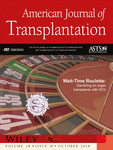
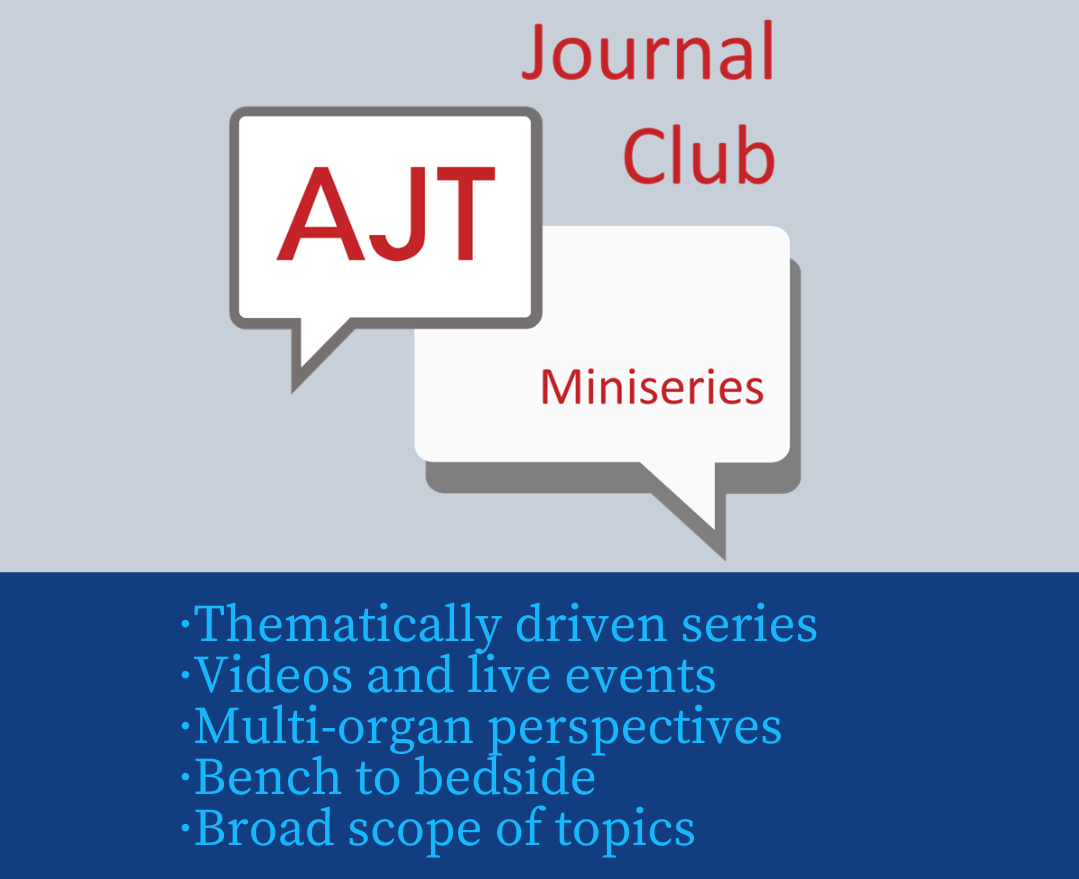


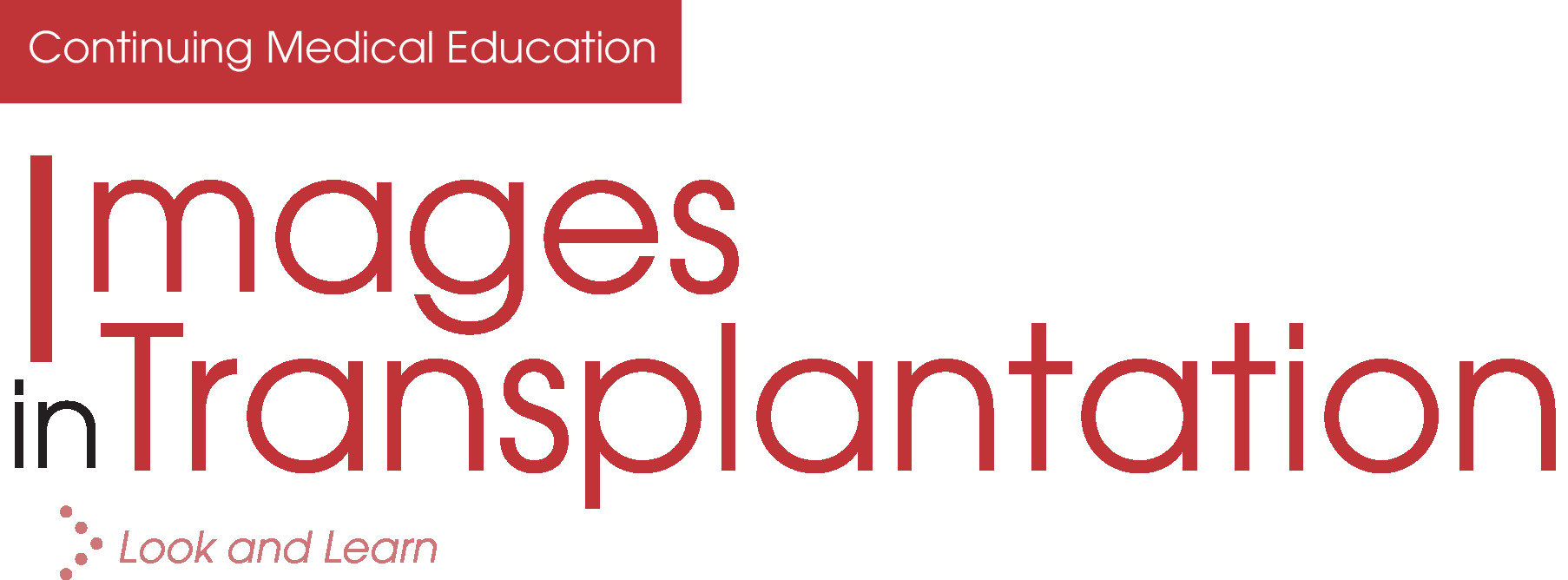
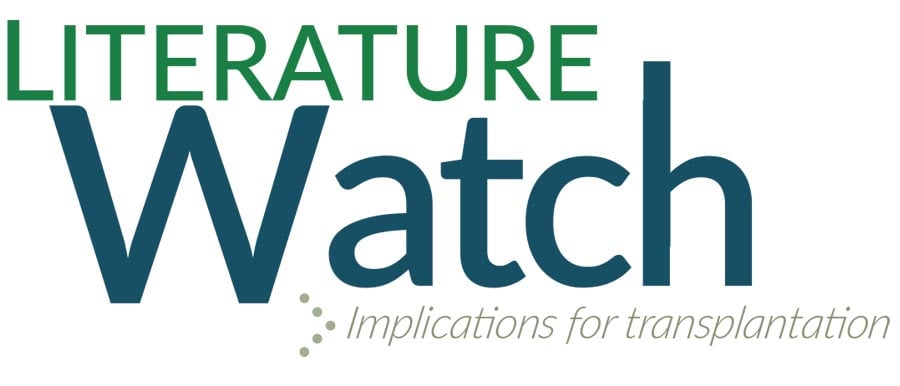
.jpg)
